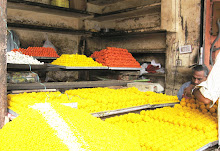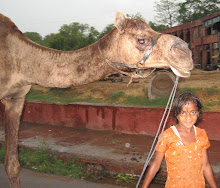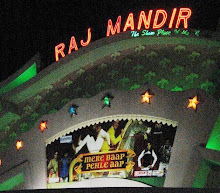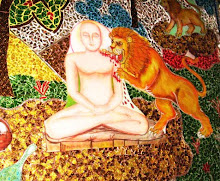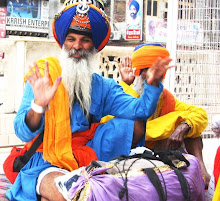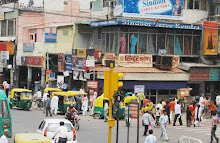Jaipur feels eerily small. A quick Wikipedia search will reveal that it has a population of about 2.5 million. But keep in mind, it’s very concentrated and within a day or two anyone with a decent sense of direction should be able to tell where they’re going. That’s important since rickshaw drivers regularly look for the opportunity to carry disoriented tourists on meandering rides to justify their inflated rates.
We met a cast of characters while here. Most of which would re-emerge as the weeks went on – reconnecting with us through a series of coincidences that would prove to be the norm during our stay.
There was the brown-toothed merchant who stopped my friend on day one. Asked her to write a love letter for him in English, then tried to get us back to his shop to “thank us properly”. (See pic of my friend Rachel courteously composing while I devise an exit plan that doesn’t involve a rape whistle).

Then there was Shek. The fluently English speaking rickshaw driver who rescued us from one of his colleagues – a colleague whose mastery of the English language got us stranded at City Palace instead of City Pulse (the mall next to our lesser known place of stay). Shek was a smooth talker, no doubt. But our relief at having someone local to converse with fluently made it easy to say “yes” when he suggested places to go.

He brought us to a fabric manufacturer, we intersected with a Texan we met in Delhi.
He brought us to “Guru Gi – the man who knows you better than you know yourself”, we see brown-toothed love letter guy from day one (fortunately, his memory was as bad as his dental hygiene and we managed to avoid an awkward reunion).
There was Rishi. The dreamy 20-something, well-schooled in western mannerisms. He rescued my friend Laura and I from an ill-planned visit to a seedy bar with a dangerously disproportionate amount of males (stupid on our part since after dark, the entire city is overwhelmingly male). Refreshingly aloof in a way that ogling locals are not, Rishi had us comfortably engaged in conversation in minutes. Only to find out – he not only knew one of our classmates, he was already dating her!

…the coincidences continue…
Remember Guru Gi? Guru Gi offers (questionable) personal readings in the back room of his family’s jewellery store. I was reluctant to have a consultation. But since my friends were presently distracted by genuine silver and other shiny things, I was circumstantially forced into going first. The reading was intense – I cried, he tried to sell me things. He ended our meeting by announcing that he would NOT see my friends. His energy was depleted and he was “tired of white skinned people”.
My friends were pissed. But this only increased Guru Gi’s intrigue making one friend in particular want a reading more than ever. When our last day came and an opportunity to revisit the guru still hadn’t emerged, she finally accepted that it would never happen.
But destiny intervened. When a last minute request for genuine rudraksha beads came in from a friend back home, I went on one final shopping trip. One thing led to another and now mr. bead seller was loading us on a rickshaw to see HIS guru. Low and behold, as the rickshaw drove out of the pink city’s walls and into the old city streets we had travelled once before, we found ourselves pulling up for the second time to Guru Gi’s shop. Surprised on one hand and not at all surprised on the other, serendipitous Jaipur struck once again and my friend finally got her reading.
The coincidences were so plentiful it became a running joke. By our final days I began placing orders with the universe personally. “Today I want a local who speaks fluent English, has resources he wants to share (money wasn’t necessary, but we were suckers for cold drinks and air conditioning by this point), isn’t creepy and has time to show us around.”
By the next morning we were sitting with our new friend in a restaurant opened early just for us, sipping on freshly squeezed mango juice (free) and chuckling over what we should ask for next.


 Today I came home to the sound of chainsaws. Were my senses more acute, I’m sure the sound of pleading trunks and branches would have accompanied them. No, I am not a tree hugger. But I *am* an avid recycler and life long fan of oxygen.
Today I came home to the sound of chainsaws. Were my senses more acute, I’m sure the sound of pleading trunks and branches would have accompanied them. No, I am not a tree hugger. But I *am* an avid recycler and life long fan of oxygen. 


































